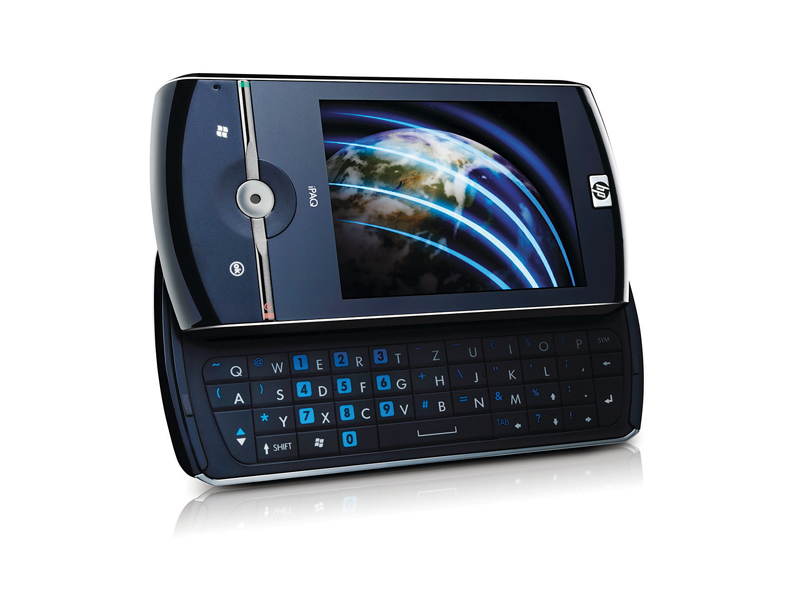TechRadar Verdict
Spec-wise, the Data Messenger seems like a decent offering, but in use it just doesn't measure up to similar smart phones
Pros
- +
QWERTY keyboard
- +
Windows Mobile smartphone
- +
Office Mobile software included
- +
65,000 colour touch screen
- +
HSDPA 3G
- +
Wi-Fi
- +
A-GPS
- +
3.1 megapixel camera
Cons
- -
Bulky and heavy
- -
Insensitive touchscreen operation
- -
Average earphones supplied
Why you can trust TechRadar
Windows Mobile smartphones ain't what they were. The stolid workhorses of yesteryear have been replaced by cool-looking recent models from HTC, Sony Ericsson and Samsung. Unfortunately, HP doesn't appear to have received the memo, and despite some impressive specs, including full QWERTY keyboard, touchscreen, fast HSDPA internet connectivity, Wi-Fi, A-GPS and 3.1 megapixel camera, the Data Messenger seems to come from an older, less user-friendly age.
It's certainly not designed to be pocket-friendly, tipping the scales at 160g and measuring 114x174x57mm. True, there's a certain minimalist style to the shiny front with faux chrome surround, but it still feels like a glossy black brick.
The QWERTY keyboard slides out with a slightly grating rasp and while it has the basics covered with 41 keys on four lines, the keys themselves are on the small side and lie flush with each other, so feeling your way around with your thumbs isn't as easy as it should be.
Touchscreen support
The touchscreen offers QVGA (320x240 pixels) resolution and 65,000 colours – perfectly adequate in other words. We had some issues with sensitivity however, and found that it could be reluctant to respond to our thumb presses, so that we were forced to resort to the stylus (sturdy, metal, telescopic) more often than should have been necessary.
Below the screen are call stop and start keys at either end of a chrome bar and beneath them two touch-sensitive soft keys for the Windows menu and 'OK'. In-between is an unusual optical D-pad which uses a camera to detect the movement of your thumb so it works a bit like the touch-sensitive variety and can be pushed inwards with a click to access menus. No practical advance on other D-pads, but it worked fine.
The 3.1 megapixel camera proved to be okay within its limits, producing pictures with a reasonable degree of detail, if slightly washed out colour on occasion. It's not the quickest available though, and it took us a good four seconds to launch and a further three from pressing the shutter button to picture capture – not ideal for quick snaps then.
Good light is essential for the Data Messenger's camera, though there's an LED flash for emergencies. There's a 5x digital zoom, and a panorama mode, which allows you to take five pictures in sequence to make up a wide-screen 180-degree view. There aren't many options for editing your pics though, since it will only allow you to zoom or rotate them. Video quality drops a bit, as you might expect, delivering consistently blurry images where movement was involved.
Basic Windows OS
While many recent handsets have augmented the Windows Mobile 6.1 OS with specially designed, more user-friendly interfaces, the Data Messenger opts for the basic system – powerful, versatile, but not particularly intuitive, and occasionally an outright pain to find your way around. Thankfully, the default web browser is Opera (though Internet Explorer is also present), and surfing proved to be fine using the fast HSDPA 3G connection which supports up to 7.2Mbps downloads, or broadband via Wi-Fi.
Opening the keyboard switches the on-screen resolution to landscape mode, ideal for most web pages, you can move around pages by brushing your thumb across the screen and zoom in or out by double-tapping the screen.
Windows Media Player is the default for viewing videos or listening to music. Videos look okay on the screen but the sound is distinctly underpowered through the supplied headphones. You can add your own of course but they'll need to have a 2.5mm jack rather than the much more popular 3.5mm variety.
Memory-wise there's 256MB on board, which won't take you very far, but you can add up to 8GB by microSD, which is much more like it, though there's none supplied.
Plenty of Apps
There's A-GPS on board too, along with Google Maps, plus a 30-day voice-guided sat-nav trial. Other apps include Microsoft Office Mobile, allowing you to create and read Word, Excel and PowerPoint documents, though strangely there's no Adobe Acrobat Reader for viewing PDFs.
The battery was on the not very side of impressive, delivering barely two days of moderate use, though we did have Wi-Fi switched on constantly and didn't make use of Windows' energy-saving features.
Perhaps this handset needed another month in R&D to catch up with the times. It has all the hard specs that a modern smartphone needs, but it doesn't have anything to help it stand out from the crowd, and it just isn't as much fun to use as many of its rivals – and even for a business phone, that's just not enough these days.
Looks - 7
Ease of use - 7
Features - 8
Call quality - 8
Value - 6
Network availability: Vodafone, T-Mobile, others TBC
The TechRadar hive mind. The Megazord. The Voltron. When our powers combine, we become 'TECHRADAR STAFF'. You'll usually see this author name when the entire team has collaborated on a project or an article, whether that's a run-down ranking of our favorite Marvel films, or a round-up of all the coolest things we've collectively seen at annual tech shows like CES and MWC. We are one.
